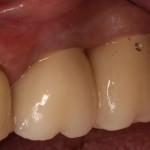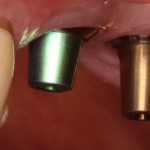Dental Implants & Surrounding Soft Tissue
Can peri-dental implant health be maintained with inadequate amounts of keratinized gingiva or attached gingiva? This is a question that has been asked by many clinicians. As a OKC board certified periodontist, I’ve always taken great pride in the amounts of attached soft tissue around the dental implants that I surgically place. I accomplish this goal by performing a variety of grafting procedures and complicated flap designs utilizing existing attached tissue. The width of keratinized gingiva around natural teeth is defined as the distance between the mucogingival junction and the free gingival margin. Whether it is required to maintain periodontal health has been a topic of interest. Clinically, a narrow band of keratinized gingiva is often observed together with gingival recession and inflamed periodontium, giving an impression that a certain amount of attached tissue might be necessary for periodontal stability. Lang and Löe reported that even with supervised oral hygiene, all sites without 2 mm of attached tissue showed clinical signs of inflammation and 80 % of sites with > 2 mm of attached tissue remained healthy; therefore, they concluded that 2 mm of attached is needed to maintain the health of periodontal tissues. However, does this same reasoning apply to the soft tissue surrounding dental implants? Many clinicians feel that this theory doesn’t apply to dental implants. This may thinking may simply be due to lack of training in soft tissue management or to clinicians not wanting to spend the time dealing with soft tissue issues.
If you are interested in how dental implants can change your life,
Check out our Dental Implants Page.
A recent systemic review in the Journal of Periodontology addressed this very problem. The results showed statistically significant differences in plaque index and modified plaque index, modified gingival index, mucosal recession, and loss of attachment, all favoring implants with wide keratinized gingiva. The authors concluded that based on the evidence, a lack of adequate keratinized gingiva around dental implants is associated with more plaque accumulation, tissue inflammation, mucosal recession as well as loss of bone.
- Dental Implants & Healthy Gums
- Healthy Gums & Dental Implants w/o Crowns





 by
by 


